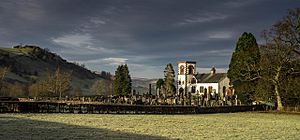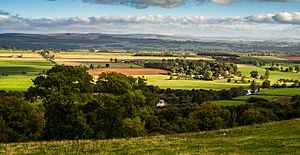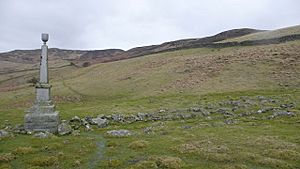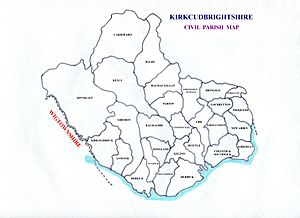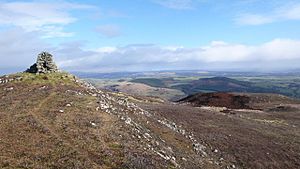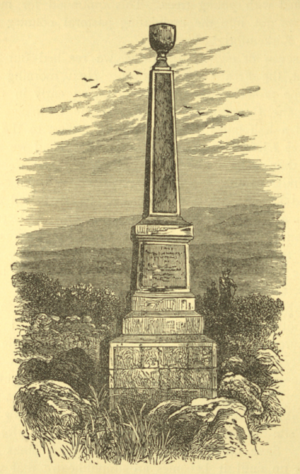John Welsh of Irongray facts for kids
Quick facts for kids John Welsh |
|
|---|---|
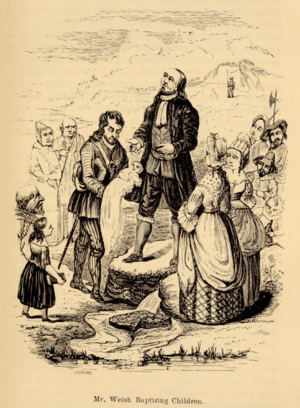
etching of Mr. Welch baptising children
|
|
| Church | Church of Scotland |
| Personal details | |
| Born | c. 1624 |
| Died | 9 January 1681 London |
| Buried | St. Botolph, Bishopsgate City of London |
| Nationality | Scottish |
| Denomination | Presbyterian |
| Occupation | minister |
| Alma mater | University of Glasgow |

John Michael Welsh of Irongray (born around 1624, died 1681) was an important leader in the Scottish Covenanter movement. The Covenanters were a group of Scots who wanted to keep their church, the Church of Scotland, free from control by the King and bishops. They believed in a Presbyterian church, where ministers and elders led, not bishops.
John Welsh was a very well-known Covenanter minister. He was active during a difficult time in Scotland, from the Battle of Rullion Green to the Battle of Bothwell Bridge. These were periods when Covenanters faced strong opposition from the government.
Contents
Early Life and Ministry
John Welsh was likely born in 1624. His father, Josias Welsh, was also a minister. John Welsh was the grandson of another famous minister, John Welsh of Ayr, and the great-grandson of John Knox, a key figure in the Scottish Reformation.
He studied at the University of Glasgow and became a minister in Irongray, Dumfrieshire, in 1653. In 1662, he was accused of speaking against the King's Parliament, but he was found innocent.
Soon after, the Church of Scotland changed. Bishops were put in charge again, which Covenanters like Welsh did not agree with. Because of this, John Welsh was removed from his church in Irongongray in 1663. Many ministers were forced out of their churches during this time. They were called "ejected ministers."
Ejected ministers were not allowed to live near their old parishes or big cities. Welsh found shelter with friends, including other ejected preachers like Gabriel Semple and John Blackadder.
Preaching in the Fields
John Welsh was one of the first ministers to start preaching outdoors, away from the official churches. These outdoor gatherings were called "conventicles." In 1666, the government declared him an outlaw for doing this. They said he was preaching in Irongray and that people attending his meetings were armed. He also baptized children at these secret gatherings.
He was known for leading very large communion services outdoors. Once, he and John Blackadder gave communion to thousands of people at Bishop's Forest in Irongray. There is still a monument there today.
Welsh was involved in the Pentland Rising, a rebellion by Covenanters. He had to flee from government soldiers after the Battle of Rullion Green.
A Man on the Run
After the Pentland Rising, John Welsh became a wanted man. He often had to hide. In 1667, he was hiding in Edinburgh. By 1668, he was preaching again in Clydesdale, sometimes even in churches.
Preaching in Fife
Welsh also preached in Fife, drawing large crowds from all parts of society. One time, he was preaching at Kinkell, near St Andrews. A student named Philip Standfield threw something at him. Welsh said that something bad would happen to the student later in life. This turned out to be true, as the young man met a tragic end.
Travels and Return to Scotland
John Welsh spent time in northern England, including Northumberland and Carlisle. He even preached in the middle of the frozen Tweed River, so he wouldn't be breaking the law in either Scotland or England!
In 1677, he returned to Scotland and continued to lead large outdoor communion services. He was also present at important Covenanter battles like Drumclog and Bothwell Bridge.
Later Life and Death
Around 1679, John Welsh moved to London, England. He died there on January 9, 1681, and was buried in St Botulph Churchyard.
His death was a big event in London. Many people, including ministers and important figures, attended his burial. It was one of the largest funerals seen in London for many years.
Family Life
John Welsh married his first wife, Elizabeth Somerville, in 1653. She passed away in Corsock. He then married again in 1674, but her name is not known. He had a son named Edward Alexander Welsh.
Writings
John Welsh wrote several books and sermons. These include:
- A Preface, Lecture, and a Sermon (1686)
- Fifty and Two Directions . . . to his Paroch of Irongray (1703)
- A Sermon preached at Nemphlar Brae in Clidsdale (1703)
- An Alarm to the Impenitent (1710)
- The Great Gospel Summonds to Close with Christ (1710)


